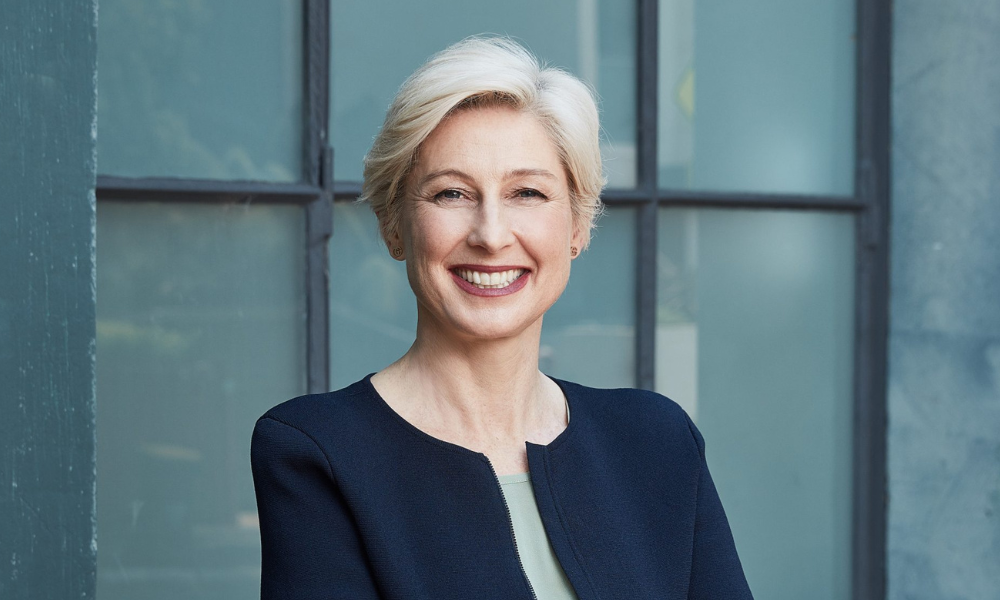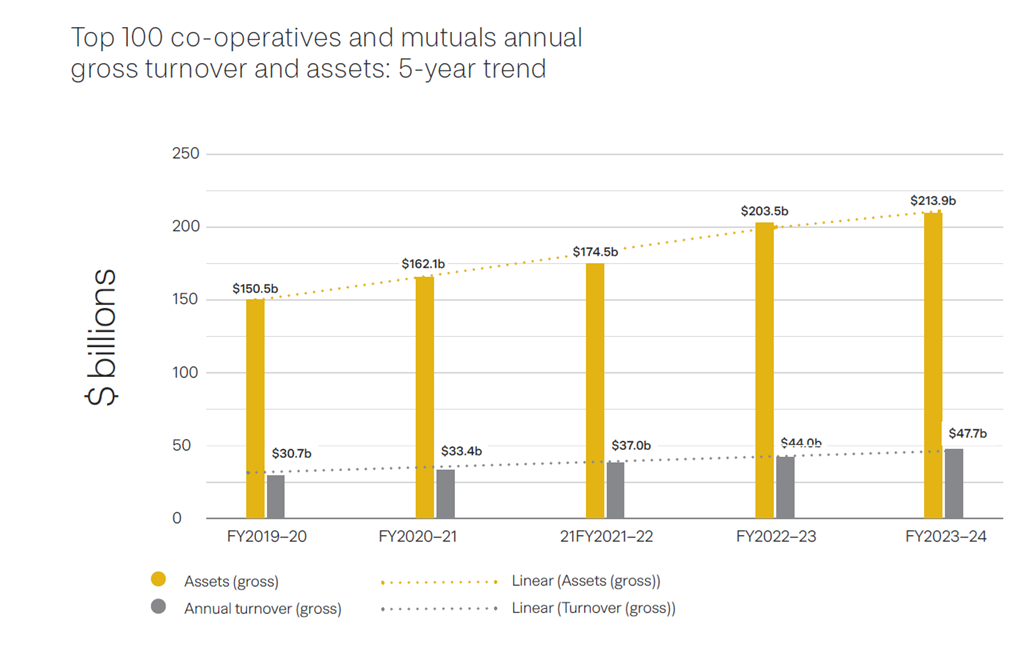Sector poised for further growth after strong year

Australia’s co-operative and mutual sector posted an 8.4% revenue increase in the year to June 30, 2024, with total turnover reaching $47.7 billion, according to the Business Council of Co-operatives and Mutuals (BCCM).
The data, released in the annual National Mutual Economy (NME) report, shows that the top 100 co-operatives and mutuals continued to grow despite a backdrop of international uncertainty and a stabilising inflationary environment. The latest results mark a 38.6% revenue jump since FY2021.
BCCM chief executive Melina Morrison (pictured) said the results highlighted the durability of the co-op and mutual model amid economic pressure. “Australia’s co-operatives and mutuals continue to demonstrate their resilience despite challenging conditions both globally and domestically, reinforcing the strength of this under-appreciated business model,” she said.
Morrison noted the UK’s ambition to double the size of its mutual economy and said a similar approach in Australia would boost competitiveness and productivity. “We look forward to working with government and regulators to position co-ops and mutuals at the centre of the economic and social agenda, similar to the UK Labor Government’s initiative to double the size of its mutual sector,” she said.
According to the report, the top 100 co-ops and mutuals managed $217 billion in assets, with a combined net profit after tax of $1.87 billion. Major players include grain exporter CBH, health insurers HCF and HBF, motoring organisations NRMA, RACQ and RAC, and diversified mutual Australian Unity.

CBH remained the country’s largest co-op with $4.69 billion in turnover. Chief executive Ben Macnamara said infrastructure investment was yielding strong supply chain efficiencies. “At CBH, we’re seeing the benefits of sustained investment in supply chain efficiency and infrastructure,” he said, adding that the company must continue adapting to market and geopolitical shifts.
People First Bank chief executive Steve Laidlaw said customers increasingly value purpose-driven organisations. “Customers want to bank with organisations that have a social conscience and do good. However, this is not enough, they also need their experiences to be simple and tailored to their needs,” he said.
HCF’s outgoing CEO Sheena Jack echoed the sentiment. “Our members aren’t just customers — they’re the reason we exist,” she said, highlighting how the mutual model helps deliver better member outcomes.
Membership across co-ops and mutuals reached 37.3 million, up from 34.7 million in the previous year. There are 1,834 registered co-ops and mutuals across Australia, employing over 94,400 people. While employment rose slightly, the sector saw an increase in merger activity among mutual banks looking to achieve greater scale and efficiency.
Upcoming mergers include Bank Australia and Qudos Bank, due to complete in July. Discussions are also underway between Teachers Mutual Bank and Australian Mutual Bank, and between Regional Australia Bank and Summerland Bank for potential combinations in 2026.
According to Bank Australia chief executive Damien Walsh, smaller institutions are facing shared challenges around technology upgrades and cyber resilience. “How smaller institutions balance these competing challenges and drive continued improvements in customer experience will be critical to their future success,” he said.
The BCCM argues that mutuals can play a larger role in sectors such as manufacturing and clean energy, helping smaller firms scale through shared ownership and local reinvestment.
Want to be regularly updated with mortgage news and features? Get exclusive interviews, breaking news, and industry events in your inbox – subscribe to our FREE daily newsletter. You can also follow us on Facebook, X (formerly Twitter), and LinkedIn.



